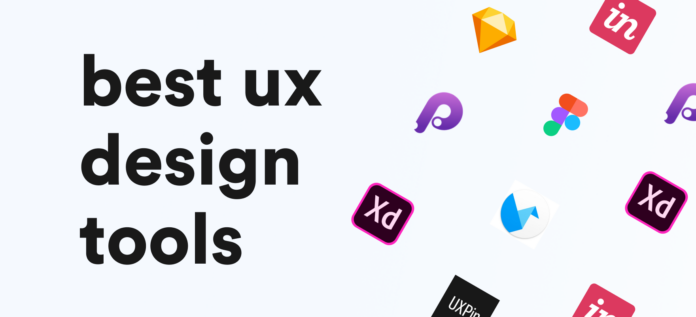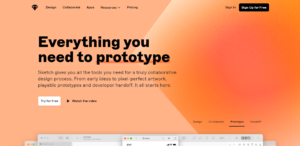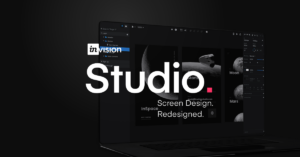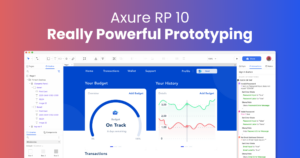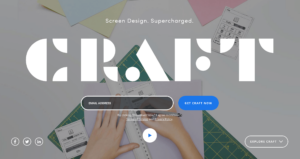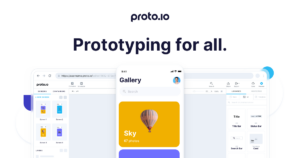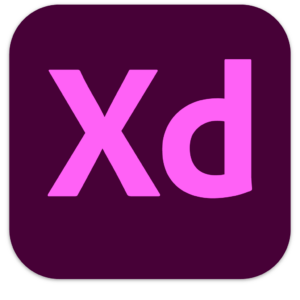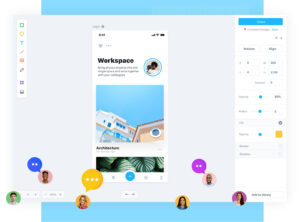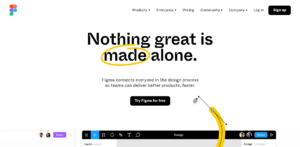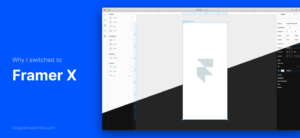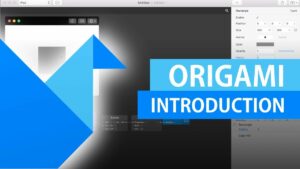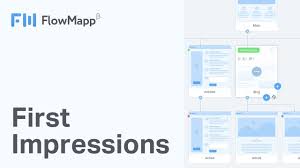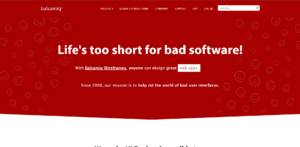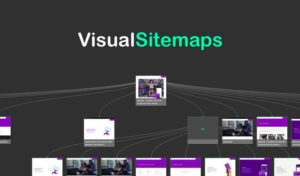Best and demanding UI/Ux design tools will be described in this article. Though they are separate aspects of web design, UI and UX complement one another. When compared to UI, which stresses your design interface and how people interact with it, UX places more emphasis on the experience users have while using your product or service.
UI design tools provide designers with the resources they need to create precise, high-design wireframes, mockups, and prototypes, as well as minimally viable outcomes. They communicate the functionality of a plan by serving as the framework.
The user and their interaction with the content are the main emphasis of UX design tools. The information architecture and user flow can both be structured with the aid of these tools. UX tools are meant to assist a designer in painting a more comprehensive picture of how content and organisation will effect the user experience because this is a more conceptual area.
We’re going to examine various UI and UX tools that you can find useful for your design process. Some of these tools include functionality that may be used in both UI and UX, however we’ve separated the list into two categories for your own user experience.
Top 15 Best UI/UX design tools In 2022
Top 15 Best UI/UX design tools are explained here.
In this list, the first 11 tools are excellent for UI design, while the next 12 to 17 are excellent for UX design. Take a more intimate look at each one to discover how you may create stunning products.
1. Sketch
You’ve probably heard of Sketch if you’ve ever done any UI design work. And there are a digit of reasons for why it’s one of the design tools that is so highly regarded.
Designers can provide consistent prototypes more quickly by having the ability to make universal adjustments, whether it’s through their library of symbols, layer styles, or text styles, or their seamless resizing and aligning features. It eliminates the laborious parts and frees creators to start creating. There are also a tonne of third-party plugins available that seamlessly connect with Sketch, so there is no lack of tools available.
Popular article: How to create live websites from mockups with Webflow and Sketch
2. InVision Studio
With a comprehensive set of tools, InVision provides designers with all the UI design resources they require to produce fully realised, workable prototypes that include animated and dynamic features. Also check data analysis tools
With collaboration tools that enable developers to share their work as they design it, receive feedback, and make recorded modifications at each step, they not only provide these simple-to-use UI design tools but also facilitate communication. The digital whiteboard, which enables team members to share ideas, collaborate, and obtain the crucial approval before moving forward, is another helpful feature of InVision.
3. Axure
Axure serves as a prototyping tool and workflow manager. It has a simple UI that allows you to record your progress. This app’s focus is on high fidelity, which produces detailed prototypes.
Axure includes a lot of the additional functionality found in well-known prototype and UI design tools. Functionality testing is possible, and it assembles everything for a simple developer handoff. This makes Axure a good option for UI design because it guarantees that everyone working on a project is continuously informed of progress and changes as they happen in real time.
4. Craft
With a sync feature that refreshes your work in progress, InVision’s Craft plugin works seamlessly with whatever work you may be doing in Photoshop or Sketch. In addition to this time-saving function, Craft provides all the tools required for prototyping and teamwork. To ensure that everyone is using and operating from the same version of a project, style adjustments, revisions, and other modifications are updated uniformly.
With its placeholder content, Craft differentiates itself from other UI design tools. You can improve the graphics in your layout by having access to both Getty and iStock images. You can operate your own data or import it from other authorities if it’s included in your layout. You can’t usually add more meaningful content to your mockups using UI design tools. Your mockups now more accurately reflect what a final design might look like thanks to Craft’s unique capability.
5. Proto.io
Proto.io claims that utilising their UI design software produces “Prototypes that seem real.” And Proto.io delivers on this, providing you with everything you need to develop, arrange, include, and test precise mockups. Along with connecting with some of the more well-known testing tools, including Lookback, Userlytics, and Validately, it also streamlines the cooperation process by boosting communication between team members through comments and video feedback.
6. Abobe XD
Adobe reigns supreme in the creative cloud with its kingdom of design tools, making it difficult to challenge their position as design software monarch. Anyone who has used other Adobe products will be familiar with the vector-based user interface tools that Adobe XD provides for generating prototypes and mockups. This makes it a go-to for many UI designers, along with real-time collaboration.
For UI designers, Adobe XD includes a wealth of sophisticated tools, but it also has everything else designers need to create interactions and other dynamic aspects that can be included into prototypes or mockups. One of the few design media that can seamlessly merge many disciplines is this one.
Popular article: How to turn your website prototypes into live websites with Webflow, from Adobe XD
7. Marvel
Marvel’s design platform makes things simple regardless of how long you’ve been a UI designer or how recently you’ve taken on the position. It provides UI designers with everything they need, all in one user-friendly interface, including the ability to generate interactive prototypes, low fidelity and high fidelity wireframes, and user testing. Additionally, Marvel offers a tool called Handoff that provides developers with all the HTML code and CSS styles they need to get started constructing. Also check campaign management tools
8. Figma
Figma enables designers to create interactive prototypes and mockups, test them for usability, and track their development. Similar to Google Docs, Figma enables a collaborative environment where several individuals can work on a project at the same time while letting you know who has it open for real-time participation. You may observe who is employed and their activities. Additionally, because it is browser-based, anyone can immediately access it. Furthermore, it is free for individual usage so you may test it out and become comfortable with how it functions.
Popular article: Converting your static designs into interactive webpages with Webflow and Figma
9. Framer X
From its beginnings as a prototyping tool that solely supported code, Framer X has developed. Today, it provides a wide range of UI design tools for creating working prototypes and performing usability tests. It’s perfect for UI designers who like to keep up with the most recent advancements in web design because it integrates with React.
Additionally, Framer X provides UI designers with a range of plugins in their marketplace, including UI kits for integrating social media sites like Snapchat and Twitter, players for embedding a variety of media, grids, and other practical elements that are simple to incorporate. With a somewhat flat learning curve, it’s a fantastic interface design tool.
10. Origami Studio
Origami Studio is more difficult than tools like InVison or Sketch, which are a little bit simpler for design novices, despite having a Facebook pedigree (it was created by and for Facebook designers). Origami Studio has a ton to offer for anyone that require a more sophisticated prototype tool as a component of their design system.
This platform includes the tools you need to create finished prototypes that are supported by an intricate patch editor, providing designers the chance to incorporate cutting-edge features. The final product of a prototype is an app or website that functions and looks like the real thing.
Sketch and Origami Studio work together seamlessly. Layers can be brought in and copied and pasted without any delays if Sketch is being used concurrently.
11. Webflow
Now for the self-promotion you’ve all been waiting for, but bear with us. You do desire to hasten the design procedure, right?
You can design with Webflow even if you have no experience with HTML or CSS. Webflow gives you the flexibility to design anything you can dream thanks to its drag-and-drop capability and user-friendly UI. When creating a prototype using Webflow, an actual website is created, and when adding micro-interactions, precise HTML and CSS code or JavaScript is generated. As a result, time is saved. You already have what you need to hand a developer in place of taking what was drafted in a prototype and creating a design from it. If you want to avoid starting from scratch, you can utilise a template.
Even Ryan Miyoshi, the lead designer at Webflow, made the decision to forego prototyping software and begin designing and developing directly in Webflow.
Internet creativity is encouraged.
Create entirely unique, fully functional prototypes or production-ready websites without writing a single word of code. merely using Webflow.
12. FlowMapp
Designers must consider structure, flow, and corresponding sitemaps, which are all the cornerstones of UX design, while creating a user experience plan. Also check projects management tools
Whereas many tools out there aim to integrate UI and UX into a single platform, FlowMapp concentrates on the field of UX design. These are the cornerstones of FlowMapp’s UX design app: creating user flows and creating visual sitemaps.
13. Balsamiq
Balsamiq’s user-friendly interface makes it simple to generate low fidelity wireframes. Wireframes are so simple to create that even those with no prior knowledge can put one together. UI and UX are both covered by Balsamiq, but its low fidelity wireframes really stand out. Anyone, regardless of skill level, may use Balsamiq thanks to its nod to the physicality of whiteboarding.
14. VisualSitemaps
You guessed it—visual sitemaps are what VisualSitemaps excels at producing. Having a tool made just for this is convenient. This programme is fully automated, has the ability to browse password-protected websites that are not yet live, and can import data into Sketch. UX designers, developers, and anybody else who has to be involved in the process of developing visual sitemaps can use VisualSitemaps to speed up the process.
15. Treejack
Although a design’s visual elements are crucial, it is nothing more than a hollow shell without excellent content. Quality content alone is insufficient; it must also be organised in a flow and structure that will optimise accessibility. Information architecture can help with this.
Information architecture is Treejack’s area of expertise. It enables you to test a website’s tree structure with actual users. You may use these insightful results to alter and improve the way the information is organised because they demonstrate how a user navigated through the content.
UI and UX are always developing
Web design is constantly evolving, and UI and UX must follow these trends to remain relevant. Which UI and UX tools have you discovered to be useful in addressing client needs and staying on the cutting edge?
